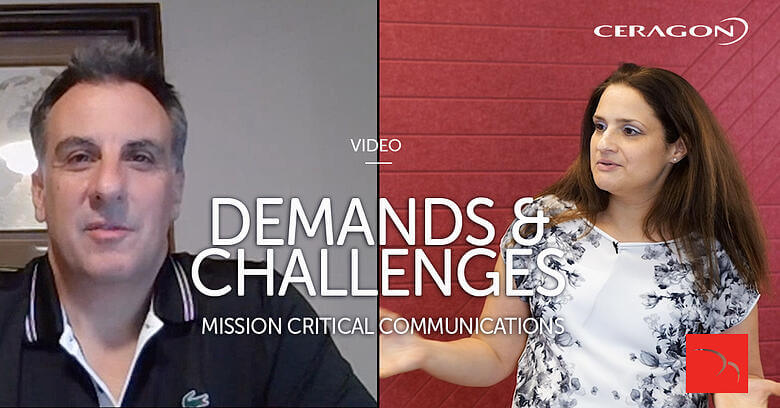Communication plays an ever-increasing role for critical infrastructure providers. It provides mission-critical information to help critical infrastructure service providers carry out their missions better. However, as Jimmy Bakakis, Sales Director Critical Infrastructure, explains to Dr.Dahlit Brin, existing communication systems face many challenges. Watch this video to discover what these are and why they pose a serious problem.
Full interview transcript:
Welcome back to the Backhaul Lounge, I'm Dahlit Brin, and I'm joined again by Jimmy Bakakis, who is our Director Critical Infrastructure. We're continuing our fascinating discussion concerning communication challenges faced by critical infrastructure providers. Now, Jimmy, welcome back.
Hi Dahlit. It's good to be back.
Lovely to see you again. Last time, you explained to us that critical infrastructure providers are essentially service providers who bring us a range of services to help keep society running as safely and pleasantly as we want it to. And you explained that today, communication is actually critical - mission critical - even to help them run their operations better and more efficiently. Now, we left at the point where I wanted to know, you know, why the current communication system that they actually use is not up to scratch and what the challenges are that they're facing today with their existing communication networks.
So, the needs are constantly changing, so as technology advances further, you have a variety of applications, a variety of devices, and all sorts of things that are being added to these networks. So, things like high-definition cameras or
applications that run analytics, and visualization software. All these added features require higher capacity and bandwidth than what was previously needed or currently in place. So, in essence, what we're looking at is we need to create a much bigger pipe to transport much larger data at faster speeds, in some cases over longer distances, and, of course, in a much shorter time.
Ok, so I understand they need more bandwidth, a higher capacity to actually
use modern communication technology to help them carry out their missions better. Is there anything else?
Yes, there is Dahlit. So all these applications that I referred to, they all rely on low latency. So latency is the time it takes to transmit a certain amount of data over the network. So low latency is extremely important to transmitting that data quickly with no delays. This becomes extremely important in cases like video transmission, for instance, where a delay can cause a drop in the feed or interrupt the transmission of any of the pertinent data that are traveling. So, the reliability of the connectivity is extremely important as well. If a connection experiences some sort of downtime, critical infrastructure agencies may lose that critical communication at a vital moment. They simply cannot tolerate this because, in some cases, that kind of could be the difference between a life and death situation.
Okay, so I understand that existing communication networks aren't able to cater to the needs of those new communication technologies, whether it's real-time data transfer, real-time videos, or large-data analytics, as you mentioned. Critical infrastructure providers must invest in their networks to upgrade them in order to help use technology to carry out their missions much, much better. So, Jimmy, thank you so much for enlightening me again today.
Obviously, a burning question now is what we, as Ceragon, can do to help critical infrastructure providers. We'll talk about this next time. So, at this point, I want to thank you again for joining us. We'll see you again in part three of our little mini-series.
Thank you for having me, Dahlit. And looking forward to the next conversation with you.
Absolutely. Thank you. This is the Backhaul Lounge. I'm Dahlit Brin. Thank you for joining us today. As always, I invite you to follow us on LinkedIn, Twitter, and Facebook. See you next time.
Want to know more?


